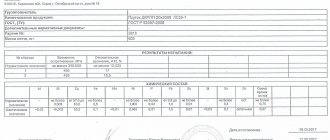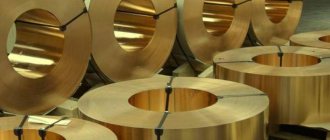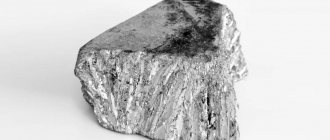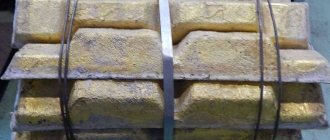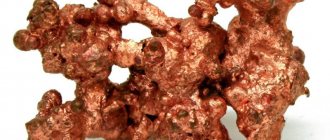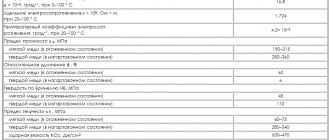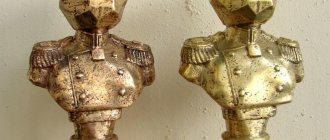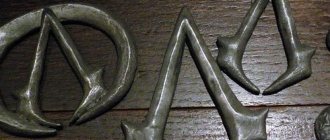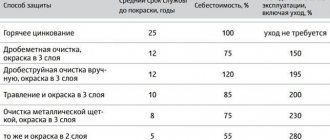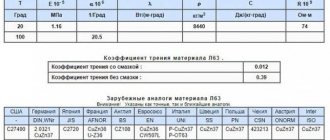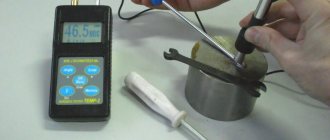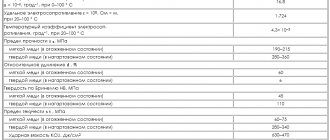GOST 15527-2004
INTERSTATE STANDARD
COPPER-ZINC ALLOYS (BRASS), PRESSURE TREATABLE
Stamps
INTERSTATE COUNCIL FOR STANDARDIZATION, METROLOGY AND CERTIFICATION Minsk
Preface
1 DEVELOPED by the Russian Federation, Interstate Technical Committee for Standardization MTK 106 “Tsvetmetprokat”
2 INTRODUCED by Gosstandart of Russia
ADOPTED by the Interstate Council for Standardization, Metrology and Certification (Minutes No. 17 of April 1, 2004, by correspondence)
The following voted for adoption:
| State name | Name of the national standardization body |
| Azerbaijan | Azstandard |
| Armenia | Armgosstandard |
| Belarus | State Standard of the Republic of Belarus |
| Kazakhstan | Gosstandart of the Republic of Kazakhstan |
| Republic of Kyrgyzstan | Kyrgyzstandard |
| The Republic of Moldova | Moldovastandard |
| Russian Federation | Gosstandart of Russia |
| The Republic of Tajikistan | Tajikstandard |
| Turkmenistan | Main State Service "Turkmenstandartlary" |
| Uzbekistan | Uzstandard |
| Ukraine | Gospotrebstandart of Ukraine |
3 By Order of the Federal Agency for Technical Regulation and Metrology dated October 25, 2004 No. 42-st, the interstate standard GOST 15527-2004 was put into effect directly as a national standard of the Russian Federation on July 1, 2005.
4 INSTEAD GOST 15527-70
GOST 15527-2004
INTERSTATE STANDARD
COPPER-ZINC ALLOYS (BRASS), PRESSURE TREATABLE
Stamps
Pressure treated copper zinc alloys (brasses). Grades
Date of introduction 2005-07-01
GOST 15527-2004
INTERSTATE STANDARD
COPPER-ZINC ALLOYS (BRASS), PRESSURE TREATABLE
Stamps
Official publication
INTERSTATE COUNCIL FOR STANDARDIZATION, METROLOGY AND CERTIFICATION
Minsk
Preface
1 DEVELOPED by the Russian Federation, Interstate Technical Committee for Standardization MTK 106 “Tsvetmetprokat”
2 INTRODUCED by Gosstandart of Russia
ADOPTED by the Interstate Council for Standardization, Metrology and Certification (Minutes No. 17 of April 1, 2004, by correspondence)
The following voted for adoption:
| State name | Name of the national standardization body |
| Azerbaijan | Azstandard |
| Armenia | Armgosstandard |
| Belarus | State Standard of the Republic of Belarus |
| Kazakhstan | Gosstandart of the Republic of Kazakhstan |
| Republic of Kyrgyzstan | Kyrgyzstandard |
| The Republic of Moldova | Moldovastandard |
| Russian Federation | Gosstandart of Russia |
| The Republic of Tajikistan | T ajikstandard |
| Turkmenistan | Main State Service "Turkmenstandartlary" |
| Uzbekistan | Uzstandard |
| Ukraine | Gospotrebstandart of Ukraine |
3 By Order of the Federal Agency for Technical Regulation and Metrology dated October 25, 2004 No. 42-st, the interstate standard GOST 15527-2004 was put into effect directly as a national standard of the Russian Federation on July 1, 2005.
4 INSTEAD GOST 15527-70
© IPC Standards Publishing House, 2004
This standard cannot be fully or partially reproduced, replicated or distributed as an official publication without permission from the Federal Agency for Technical Regulation and Metrology
to GOST 15527—2004 Copper-zinc (brass) alloys processed by pressure. Stamps
| In which place | Printed | To be |
| Item 2.1, Table- | ||
| 3. Column “Mass dollars, %, Pb lead- | ||
| "nets." For brand LO 60-1 | 0,03 | 0,3 |
(IUS No. 6 2005)
2a Normative references
GOST 1652.1-77 (ISO 1554-76) Copper-zinc alloys. Methods for determining copper
GOST 1652.2-77 (ISO 4749-84) Copper-zinc alloys. Lead determination methods
GOST 1652.3-77 (ISO 1812-76, ISO 4748-84) Copper-zinc alloys. Methods for determining iron
GOST 1652.4-77 Copper-zinc alloys. Methods for determining manganese
GOST 1652.5-77 (ISO 4751-84) Copper-zinc alloys. Tin determination methods
GOST 1652.6-77 Copper-zinc alloys. Methods for determining antimony
GOST 1652.7-77 Copper-zinc alloys. Methods for determining bismuth
GOST 1652.8-77 Copper-zinc alloys. Arsenic determination methods
GOST 1652.9-77 (ISO 7266-84) Copper-zinc alloys. Methods for determining sulfur
GOST 1652.10-77 Copper-zinc alloys. Methods for determining aluminum
GOST 1652.11-77 Copper-zinc alloys. Methods for determining nickel
GOST 1652.12-77 Copper-zinc alloys. Methods for determining silicon
GOST 1652.13-77 Copper-zinc alloys. Phosphorus determination methods
GOST 9716.1-79 Copper-zinc alloys. Method of spectral analysis using metal standard samples with photographic recording of the spectrum
GOST 9716.2-79 Copper-zinc alloys. Method of spectral analysis using metal standard samples with photoelectric recording of the spectrum
GOST 9716.3-79 Copper-zinc alloys. Method of spectral analysis of oxide samples with photographic recording of the spectrum
GOST 24978-91 (ISO 4740-85) Copper-zinc alloys. Methods for determining zinc
GOST 25086-87 Non-ferrous metals and their alloys. General requirements for analysis methods
ST SEV 543-77 Numbers. Recording and rounding rules
(Introduced additionally, Amendment No. 1).
Application of brass
Brass is a universal material, therefore it is widely used in many areas. The material, which is highly resistant to corrosion, is actively used in mechanical engineering and shipbuilding. It also serves as a material for the manufacture of vessels, fasteners, squares for decorating books, pectoral crosses and military insignia: orders and medals. Brass is in demand in the production of pipes, taps, couplings, fittings, and other parts that are in demand in plumbing. Even when creating jewelry, brass is used.
Marking order
The following markings are accepted. The brass alloy is designated by the letter “L”, followed by the letters of the main elements that form the alloy. In grades of wrought brass, the first two digits after the letter “L” indicate the average copper content as a percentage. For example, L70 is brass containing 70% Cu. In the case of alloyed wrought brasses, letters and numbers are also indicated, enriching the name and amount of the alloying element, LAZH60-1-1 means brass with 60% Cu, alloyed with aluminum (A) in the amount of 1% and iron in the amount of 1%. The Zn content is determined by the difference from 100%. In cast brasses, the average percentage of alloy components is placed immediately after the letter indicating its name. For example, brass LTs40Mts1.5 contains 40% zinc (Z) and 1.5% manganese (Mts).
Brasses are double and multicomponent copper alloys in which the main alloying component is zinc. Compared to copper, brasses have higher strength, corrosion resistance, casting properties and recrystallization temperature. These are the cheapest copper alloys. Brasses are widely used in mechanical engineering and many industries.
Double (simple) brasses containing 88-97% Cu are called tombak, and those containing 79-86% Cu are called semi-tompak. According to their structure, α-brasses, (α+ β)-brasses and β-brasses are distinguished, and α- and (α + β)-brasses are ductile in cold and hot states, β-brasses only at high temperatures. In Fig. Figure 11 shows the dependence of the properties of copper-zinc alloys on composition.
Copper-zinc alloys alloyed with one or more elements are called special brasses. The name of such brasses is given by alloying elements, for example, brass containing lead is called lead. Plain brass is marked with the letter L, followed by the copper content in%. In special brasses, after the letter L, write the capital letter of additional alloying elements and, through a dash after the copper content, indicate the content of the introduced elements as a percentage. Depending on the processing method, brass is divided into deformed and cast brass. The latter can be made from recycled materials (recycled brass foundry). Sheets, strips, strips, and rods are made from deformed brass. pipes, wire and forgings; from foundries shaped castings.
Mechanical characteristics
Due to the presence of lead in the composition of LS59-1 brass, when processing products made from it by cutting, small chips are formed, which allows such processing to be performed at high speeds. A distinctive feature of the alloy in question is that lead constitutes a separate phase in its internal structure. This makes such a material highly susceptible to plastic deformation. Meanwhile, if we compare LS59-1 brass with two-component alloys, it is significantly inferior to them in its ductility, so it is better to process such material by cutting.
The range of products made from LS59-1 brass includes:
- rods with different cross-section profiles;
- sheet material – strips, sheets, plates;
- wire;
- profile rolled products;
- pipe products.
Main characteristics of L59-1 brass
Brass of the LS59-1 brand is distinguished by good anti-friction characteristics, which allows the use of such material for the manufacture of products operated in conditions of high friction. From this alloy, in particular, sliding bearings are produced, used to complete various mechanisms and machines. In addition, the abrasion resistance that LS59-1 is characterized by allows this brass to be used for the manufacture of guides for machine tools for various purposes.
Technological properties of alloy L59-1
Since brass of this brand has a multiphase structure, products made from it are characterized by increased fragility. Parts made from LS59-1, on which surface cuts are made, cannot be used as load-bearing elements, since they can break under significant pressure. In addition, the increased fragility of this brass leads to the fact that when exposed to shock loads, the surface of products made of this material can become covered with cracks, which does not allow them to be processed using such a technological operation as forging.
Rolled brass
Rods
Produced in accordance with GOST 2060-90.
Round, hexagonal or square brass rods are produced in coils of unmeasured and measured lengths.
According to manufacturing accuracy, rods are divided into rods:
- normal accuracy;
- high;
- elevated.
Based on the state of copper, they are divided into hard, semi-hard and soft.
There are also special conditions for the release of copper lashes. So, this material happens:
- with cut ends (anti-magnetic, automatic);
- increased ductility in a soft state;
- increased plasticity in a semi-solid state;
- increased plasticity in the solid state;
- normal plasticity in the pressed state.
Wire
Produced according to GOST 1066-90.
The material , in accordance with GOST 15527, is brass L80, L68, L63 and LS59-1.
Brass wire is produced only to normal precision. Depending on the condition of the metal, the wire can be hard, semi-hard or soft.
Ribbon
Produced in accordance with GOST 2208-91.
The material is brass grades L90, L85, L68, L63, L80, LS59-1, LMts58-2 (GOST 15527).
Brass tape is produced in spring-hard, soft, semi-hard, extra-hard and hard states.
According to the manufacturing accuracy, the tapes are divided into materials:
- normal accuracy both in width and thickness;
- increased accuracy in width, but normal in thickness;
- increased accuracy in thickness, but normal in width.
Based on their design, the tapes are divided into the following types:
- antimagnetic;
- by crescent shape - increased accuracy;
- with normalized extrusion depth;
- bend tested.
Pipes
Produced according to GOST 494-90.
Based on material, brass pipes are divided (GOST 15527) into:
- drawn pressed and cold rolled (L63, L68);
- pressed (L60, LS5-1, LZhM259-1-1, L63).
According to the length of the outlet, brass pipes can be of measured and unmeasured lengths (1...6 m) and in coils (more than 10 m).
According to the manufacturing accuracy, pipes are divided into products of normal, increased and high precision.
Depending on the condition of the metal, pipes are produced: soft, quarter-hard, semi-hard, semi-hard with increased ductility and soft with increased ductility.
According to special conditions, brass pipes are divided into products of increased accuracy in curvature, simply increased accuracy and anti-magnetic.
Depending on the brand of brass alloy, pipes are produced in semi-hard or soft form.
What is
This is one of the most recognizable materials on the planet. Like bronze, brass is not a metal, but an alloy.
It can be two- or multi-component. The base component of the alloy is the main non-ferrous metal of the planet, copper:
- In the first case, it is supplemented with zinc (up to 44%). This pair accounts for the bulk of the mass in the alloy.
- In multicomponent compositions, tin, lead, nickel, iron, manganese, and other alloys are added to zinc.
Zinc improves consumer properties, simultaneously reducing the price of the final product.
Brass is not a metal. Like bronze, it is a conglomerate of several components.
